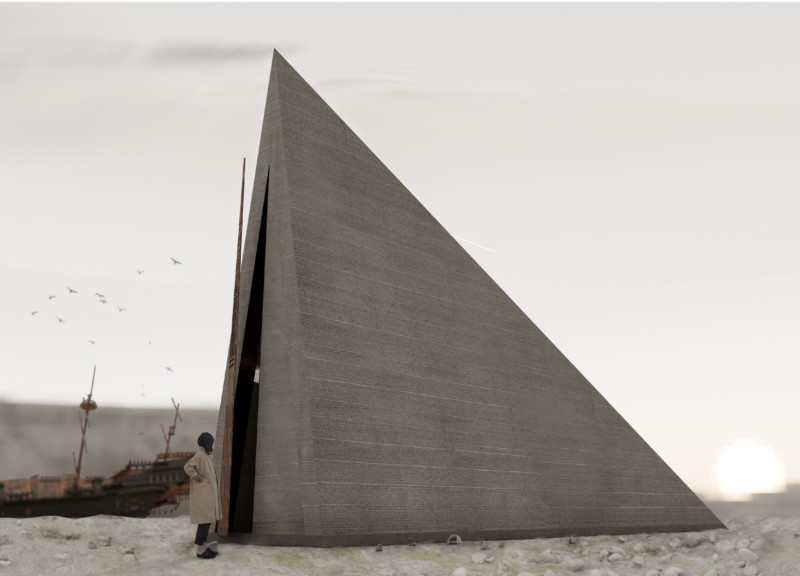5 key facts about this project
The design centers around a contemplation of absence and memory in our surroundings. Set in an environment filled with remnants of human activity, the proposal intertwines narrative and physical structure. It invites reflection on how we inhabit and relate to spaces that have lost their former energy. By blending stories of emptiness with physical forms, it offers a deeper insight into human experiences and the passage of time.
Concept and Narrative
The narrative embedded in the design highlights the contrast between idealized modern living and the reality of absence. It challenges viewers to confront their relationship with spaces that lack life and vibrancy. An exploration of memory becomes a focal point, urging a reconsideration of how these spaces inform our understanding of existence. The juxtaposition of emptiness against vibrant ideals sparks a dialogue about our connection to the environments we inhabit.
Structural Approach
A rammed earth pyramid serves as the primary structural element. This form evokes a sense of stability and permanence. Its shape connects the design to historical architectural practices while also projecting a vision for the future. The pyramid acts as a grounding force, emphasizing a relationship with the earth. This choice of structure incorporates a sense of narrative that pervades the entire project, linking physical form to deeper meanings of presence and absence.
Materiality and Construction
Attention to material selection underlines the focus on sustainability. Rammed earth is a key component, reinforcing the connection to nature while providing durability. The construction process involves traditional techniques, such as mixing and ramming, which help achieve structural integrity. Additional materials like corten steel, trass-lime, bitumen, and mortar complement the overall design, ensuring that every element serves both practical and narrative functions. This careful approach integrates ecological responsibility into the design's framework.
Spatial Experience
The project invites an immersive experience within its spaces, where the absence of human presence is palpable. Arrangements are designed to evoke a sense of reflection and introspection. The emotional weight of these spaces enables visitors to connect with memories that linger in the environment. A thoughtfully placed threshold encourages contemplation, prompting observers to consider their own connections to the stories imbued in the space. This engaging interplay between presence and absence ultimately defines the essence of the design, making it a site for quiet reflection on memory and existence.



















































